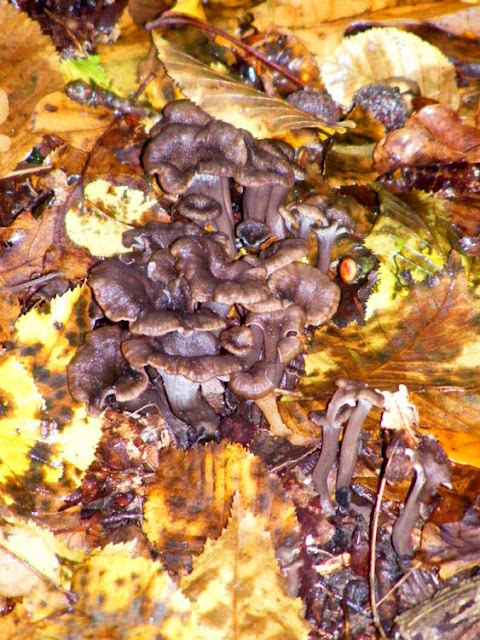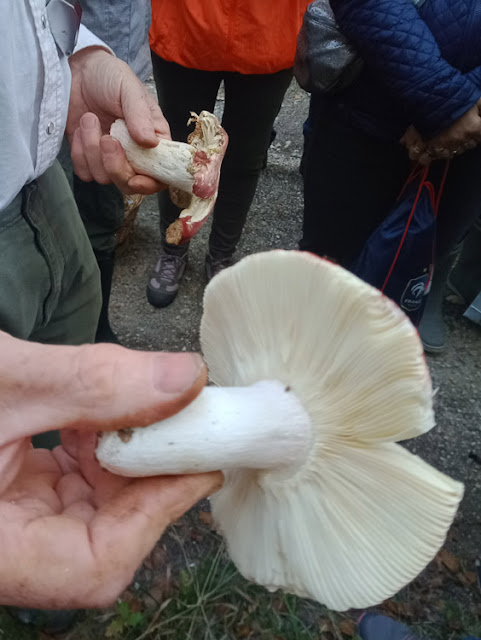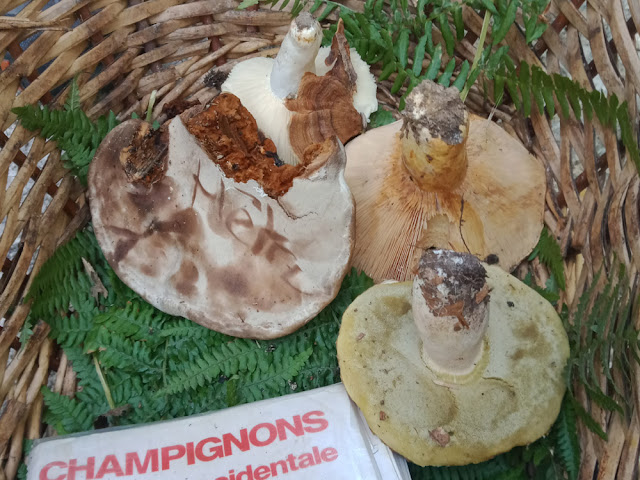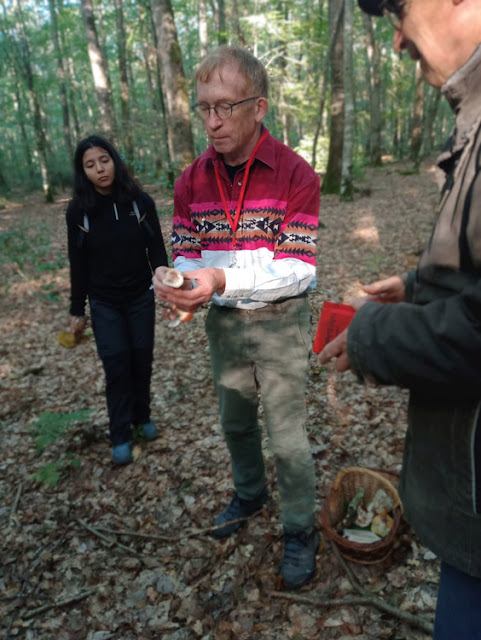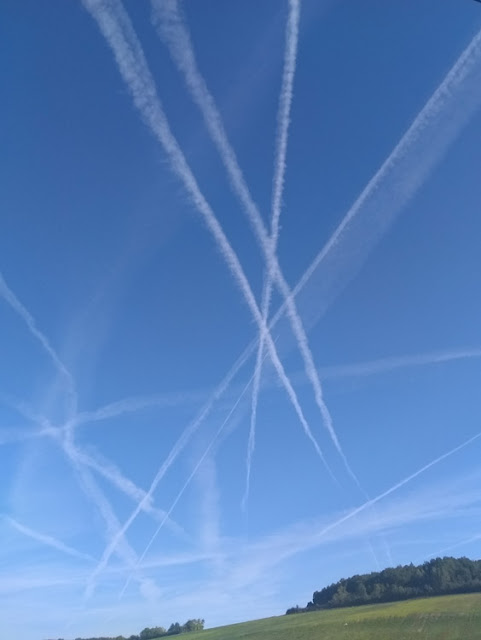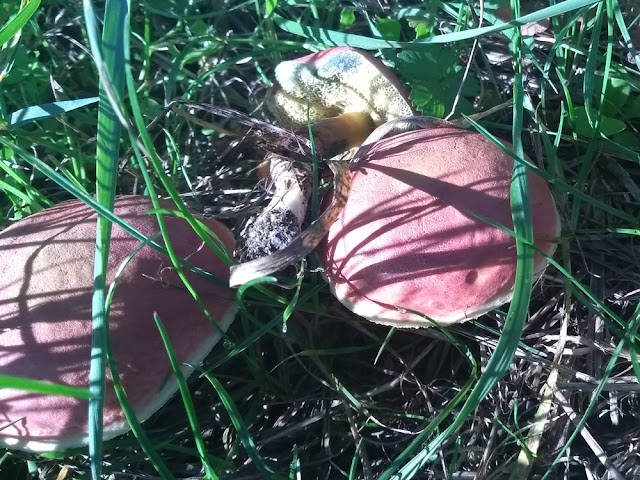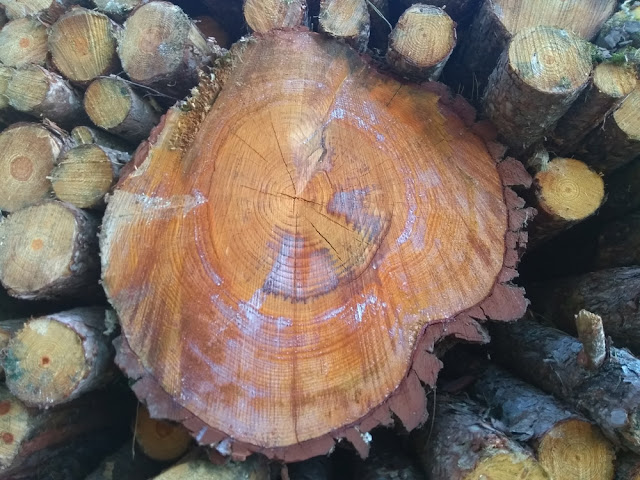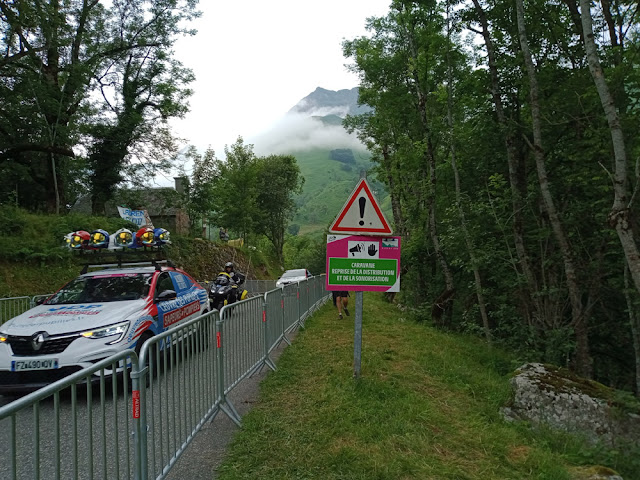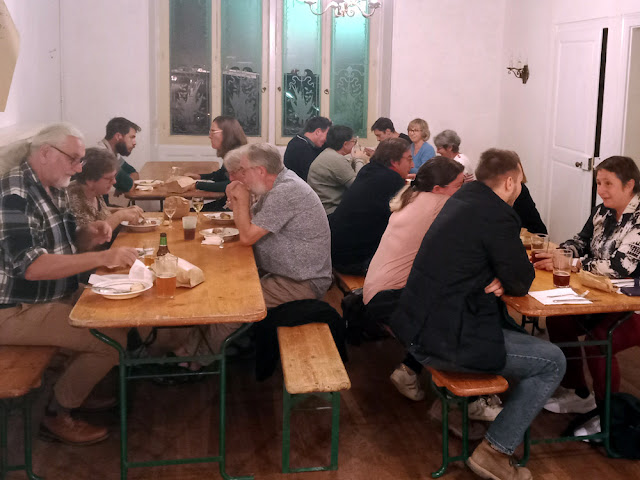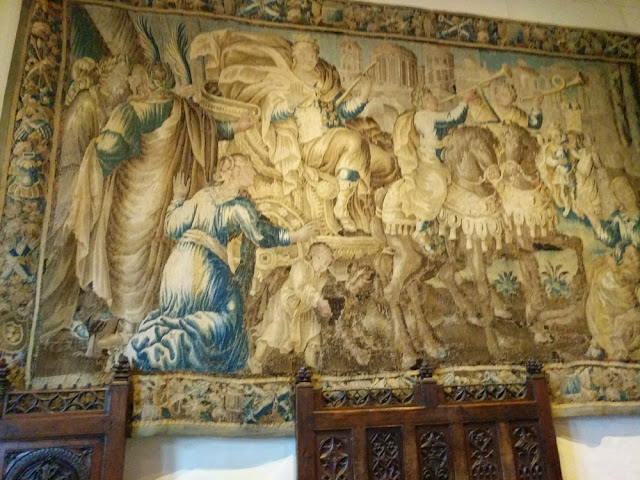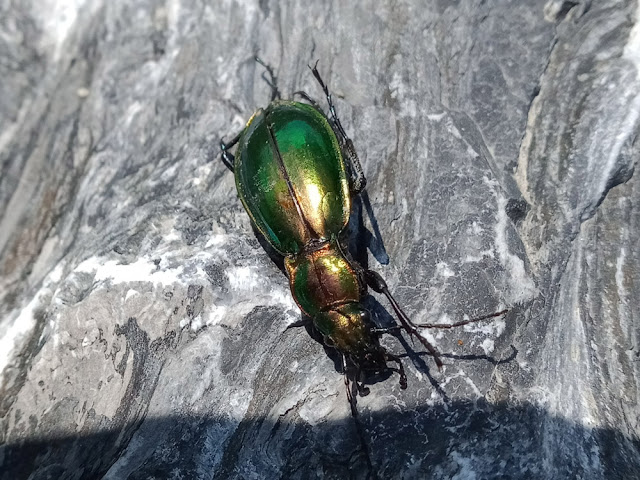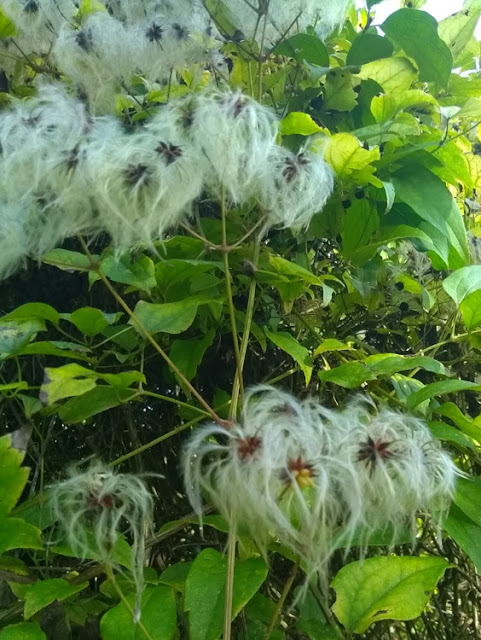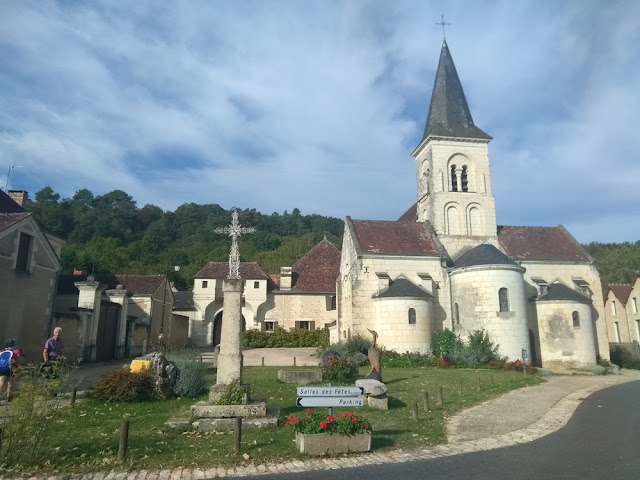The Pyrenean Mountain Dog (Fr. chien de montagne des Pyrénées), known colloquially as a 'patou', from the Occitan 'pastor', is an ancient breed of shepherd dog used in the south-west of France and the north-east of Spain, particularly the Pyrenees, to protect the herds against predators, especially the bears that live there. They are guardians, not herding dogs (the shepherds use a black and white collie type dog called a labrit, or berger des Pyrénées for that). Patous are very big dogs, big boned with long white hair, and weighing about 65 kilos. The breed is mentioned in documents from the 14th century.
This Patou at Aubisque was seeing off all the motorcyclists and cyclists passing on the road. Its flock had settled themselves around the carpark in a way that was less than ideal for the poor dog.
As well as guarding flocks of sheep, or sometimes goats, cattle or even beehives, they make good guard dogs for properties and family pets. Depending on the threat -- bears, wolves, foxes, rustlers, stray dogs, corvids -- one, two or three dogs may be required per flock. Bears require two or three Patous defending the flock just because of their size and strength. Wolves hunt in well organised packs and can easily out manoeuvre a single dog on its own trying to protect a flock. Other threats are put off quite easily by a single barking dog that actively advances towards them.
In the Middle Ages they were used to guard chateaux and to protect herds against predators (which in those days included bears, lynx, wolves, and even man). At this time they would have worn heavy iron 'wolf collars', studded with spikes, to protect them from attacks. Very popular in the 17th century, there were even some at the court of Louis XIV. There are stories of them being used to smuggle goods across difficult mountain passes on the Spanish Franco border too.

The Patou became less common in the countryside, and finally by the end of the 19th century, not present at all except in parts of the Pyrenees, because the big predators became locally extinct. But since the 1980s, following the return of wolves across the Alps and the return of bears in the Pyrenees, there has been a resurgence of interest in the breed amongst shepherds. The breed is part of the official campaign to protect herds, along with night pens enclosed in electric fences and extra shepherds. Farmers benefit from grants to buy, train and keep the dogs, as well as other strategies to protect their herds. The dogs can reduce stock losses from predation by up to 90%.
In 1965 the breed became famous because of the French television series Belle et Sébastien.
At the heart of the flock they are remarkable guardians. Their role is not to herd, but to protect. To do this they are accustomed very early to live with the flock and become part of it. If the dog detects an intruder, they bark and insert themselves between the flock and the perceived threat.
Like all dogs, Patous occasionally bite humans, and there have been several instances widely reported in the media. There can be issues between working dogs and holiday makers on the hiking trails and mountain meadows.
The poster above says "Hello. I am a Pyrenean Mountain Dog, known as a Patou. My role is to oversee the security of the beasts that I protect. In order to avoid upsetting the flock, please give them a wide berth and keep your dog on a lead." The cartoon part tells you to get into the habit of adopting certain behaviours if you meet a Pyrenean Mountain Dog, such as not approaching or patting the sheep, and not running around or shouting. If you have a dog with you do not allow it to interact with the Pyrenean Mountain Dog, even though the Pyrenean Mountain Dog may approach you and your dog. Don't try to pat a Pyrenean Mountain Dog, or brandish your hiking pole at one, or throw stones at one. If you run away screaming, expect the dog to chase you. Don't stare directly into the dog's eyes -- it will see this as an attempt to dominate it and react aggressively. If you are riding a bike, dismount and walk until the dog is no longer interested in you. If you ride past the dog will chase you. If you are walking, do so calmly and steadily, not taking too much notice of the dog. You can speak gently to them, but don't interact further than that. Once you are no longer a threat the dog will peaceably return to its flock.
But as one of the shepherds I've seen interviewed said, it is more or
less impossible to train a dog to ignore domestic dogs if their job is
to attack wolves. To avoid conflicts some places are trialling a geolocating app whereby hikers can download the positions of all the flock protection dogs wearing a device and thus give them a wide berth. The shepherds are happy to do this but I have my doubts about whether hikers will even realise they can do this or in some cases even understand why they should. It is quite common to see sheep dogs lounging about near cars in the mountains and I wonder how many tourists realise they are working dogs, accompanied by a shepherd who has driven up to check the flock, not somebody's pet out for the day.
Every year there is a Pyrenean dog breed show in mid-September in the park in Argeles-Gazost. This year will be its centenary.
Further Reading:
The website of the association of working Pyrenean dogs https://www.pastoralepyreneenne.fr/ [in French].
The website of the association of Pyrenean dog lovers, who run the annual dog show https://www.chiens-des-pyrenees.com/ [in French].



